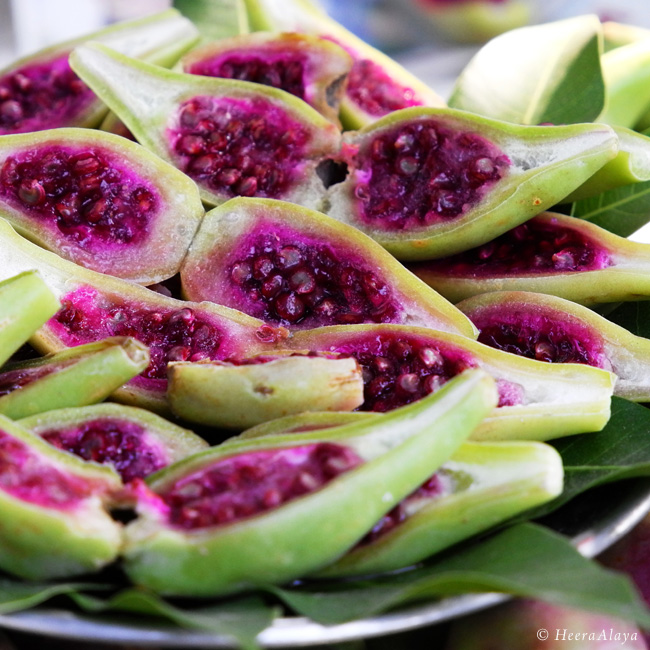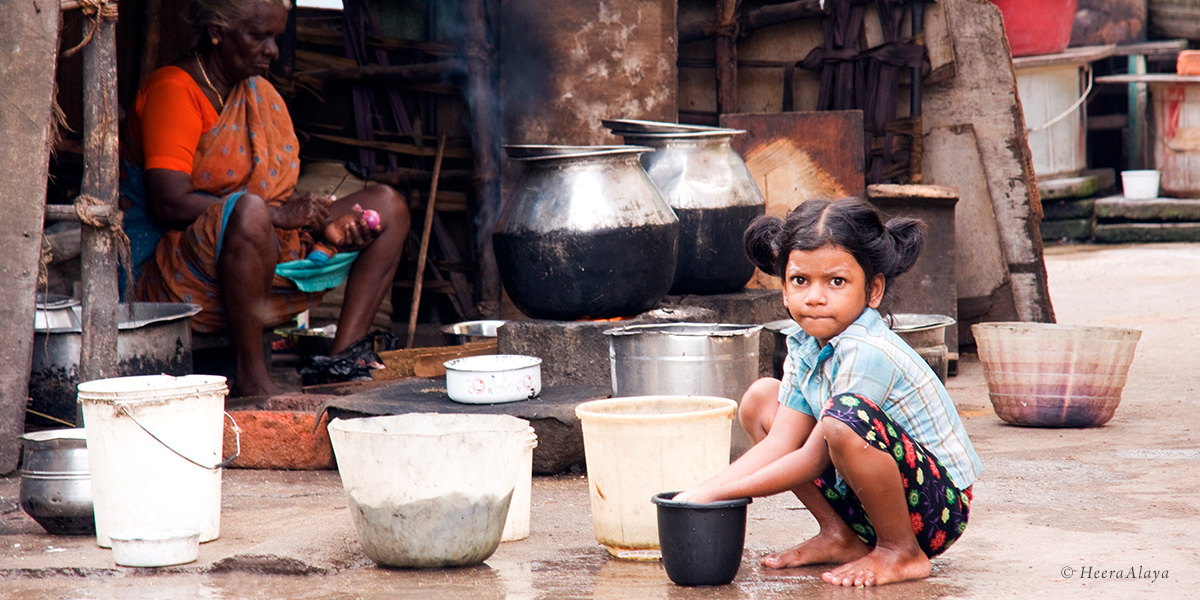
“The best way to experience India
is through openness, sincerity
and equal parts of courage
and gratitude.”
PATINA
India: a land of unrivaled mosaic.
December 5th, 2016
SLOW
A plethora of emotions tends to engulf me when I set foot on Indian soil. Fortunately, the unexplainable chaos steers me from overthinking, forcing me to navigate India’s disparities—the clamour for shared transportation, expensive chauffeur-driven cars, impoverished pavement dwellers, mushrooming luxury hotels and blaring music from teashops—each jostling for a spot. These contradictions feel at once alarmingly natural as they do disturbingly strange. India is a land of contrasts, where old systems juxtapose with new growth and ancient traditions collide with contemporary thoughts. India carries the weight of its past and constantly wrestles with growing issues (including population). And somehow, in the craziness of it all, life works out, almost.
On arrival, the order of the moment is always the same—to have a piping hot cup of coffee to combat my jet lag (or so I would like to believe, knowing very well that coffee does nothing more than satiate my taste buds). So what is this home? Is it a building, social class, friends or perhaps impressive things? This narrow thinking of home is restrictive. Home, to me, is in the layered complexities of life, which can’t be segregated. I find this home in the drifting fragrance of frangipani, quiet moments that speak for themselves, fishing boats at dawn, speeding fuming trucks, calls of fruit vendors and even the annoying honking! This home resides in unarmored conversations and genuine hospitality. The poor’s graciousness and magnetic courage are as much home as the dignity of the very few (emotionally) educated who live minus flashiness. In a nutshell, I find home in the abundance of India’s land and its people. Here, abundance is not just a cool borrowed word; it’s an integral part of life.

As the morning dawns, a mélange of rambunctious creatures—talkative parrots, hammering woodpeckers, cawing crows and grunting pigeons greet me with their abundance. The birds chirp, sing and glide on different levels, reminding me of the sight a few hours prior—planes landing and taking off at Heathrow [international airport in London, England]. Not to be outdone, cheeky shrill squirrels dart, putting on quite the display around fuchsia bougainvillaea. On the one hand, the uplifting orchestra of cawing, humming and screeching appears to have a master conductor like Zubin Mehta; on the other, the flooding of crude-annoying sounds is orchestrated by man who disregards the environment. Police yelling on loudspeakers further escalates the noise pollution drowned by the horns of speeding trains, which is efficiently interjected by jackhammers. This kaleidoscope of life is India.
How do you capture India? You don’t. India is an experience, and experiences don’t come with safe formulas; they can’t be captured in vintage vials. The best way to experience India is through openness, sincerity and equal parts courage and gratitude. Your positive thinking won’t guarantee a smooth ride—India can be incredibly challenging and horribly frustrating, teaching you lessons on navigating through the terrains of life. As you discover varied elements—the colourful vendors, the pit-a-patter of the rain swelling the earth, and the deft darting bicyclists on rickety bikes, brace yourself for passive aggressiveness, indecisiveness, harassment and herd mentality that rides just as smoothly as overstepping boundaries, unnecessary touching and entitled inquisitiveness. These corrosive behaviours are not social class-defined—they are all-pervasive, no different from the smog and soot you will encounter. Once you learn to recognise the gunk, you can tackle it. The best way to shut down ugliness is to address it directly—politeness and respect are (conveniently) misperceived as signs to exploit you.


During your stay in India, you will also hear a great deal about the caste system, including from the “foreign returned-educated types.” I find it repulsive and comical when people change their accents (to claim their superiority), refer to specific activities and probe: “If you don’t mind, what’s your caste?” Suppressing others while claiming their identity through caste and class structures is anything but high-thinking and forward-moving. Despite layered negativity, I encourage you to brave yourself, take the plunge, travel to India and surrender to its pulse.

To experience India’s heartbeat, you need to feel it.
And let’s be honest, you can’t feel anything special in the formulaic hospitality of luxury hotels—they can offer you
only so much of the same; here, boredom quickly curdles
in the coldness. Step out to be thawed by the common person’s warmth, or better yet, get off the grid, away from city-dwellers and indulge in an adventure—travel by train through India. The mysterious alchemy of rural landscapes can instantly make you feel you belong. Train journeys in India are not entirely comfortable (or hygienic); however, they transport you through largely undeveloped villages. You will discover landscapes that exude unparalleled charm bathed in hazy sunshine; perhaps you will savour several meals under dappled light or/and relish the splendour of the setting pink sun.
As you traverse India, you will likely encounter painting-like embroideries, intricate jewellery and lace-like stonework. These detailed architectural works of splendour are created from the imagination of artisans who live nondescript lives; their sensitivity pours from their souls to their hands. After all, creativity blossoms from vulnerability and unpretentiousness. And, as often is the case, the educated, lacking moral conscience—an apt accompaniment to their parched creative puddles—hijack the indigenous designs of the esthetically educated and pass them off as their own. How else can the meritless float in pretentious bubbles? We can’t justify our lack of creativity by crediting others, so we will steal and suppress. And then you have a particular breed of foreigners—equally lacking in ethics—who arrive for their share of the pie, pretending to “rescue artisans,” only to milk generous springs to feed their growing meagerness.
Over the years, I have heard umpteen foreigners comment on India’s hospitality: “The generosity of strangers blew me away; they took care of us so well. They [Indians] went out of their way to help us, never charging a dime.” Sadly, this spirit of abundance didn’t transfer to these foreigners—they took (and grabbed) but left with their scarcity. For those of you who fall into this impoverished category, I hope you permit yourself to imbibe qualities of richness and generosity of spirit, rid of your emotional poverty once and for all. What’s the point of travel if the richness and generosity you experience fail to complement your future actions? By shifting gears from exploiting—to feeding your emptiness—you can learn from people who have less yet are rich. The wholesome tapestries you will experience as you travel through India come from the ordinary person; learning magnanimity from their genuine actions can help you resurrect your outlook on life.

The defining image you see above is integral to my homeland, India; unfortunately, poverty is glamorised (There is nothing cool about hunger, neglect and violence.), and people experiencing poverty are conveniently photoshopped out of the landscape to make India appear more appealing. Continuously editing out the oppressed is to deny their existence while consistently abusing humanity—a shared destination called the world. Please don’t look down or treat people experiencing poverty with pity; instead, reserve your disgust for the morally corrupt who ensure the sun doesn’t rise in the land of the destitute.
Unlike the educated class
who dresses and lives to project an image,
the poor’s unfailing spirit will show you that
colour and creativity are not a show for them.
The commoner lives with richness and originality,
just as he does with humility and sensitivity,
painting India’s authentic canvas.

Each experience in India offers an education (free of cost). On your part, I request a bit of preparation. For example, while skimming through India’s geography, you will understand how its proximity to the equator—the south of India is closer to the equator than the north of India—makes the heat unbearable. Exposure to direct sunlight makes the skin produce melanin pigment—to protect layers beneath the epidermis—resulting in our Indian skin colour ranging from cocoa to cinnamon and golden. Educating ourselves on many dimensions of life aids us in travelling with greater respect.
Your expanding education will continue to serve a deeper purpose. For instance, each time you come across exotic India sold in the form of a captured bird in a cage touted to read your horoscope, a decorated elephant trained to give you its blessing, a luxury hotel horse buggy designed to make you feel like royalty or a dressed-up monkey forced to dance for your entertainment, realise that this violence against animals is neither compassionate, royal or spiritual—it’s abuse at its very core and corrosive to life spirit.
Animals, irrespective of size, deserve to live in their natural habitat, not be broken down and exploited for human apathy. So please refuse to propagate animal abuse; we need your mind, heart and voice.

If you aspire for your perfect anecdote of India to be one of bragging rights—waxing rehearsed eloquent about lavish fortresses, exotic women and the “centuries-old embroidery” on designer garb, amongst other concoctions—my version of India might not be your cup of tea. It’s an insult to the country when you boil down the essence of an expansive, ancient civilisation like India to (tortured) elephants, palaces, Bollywood and curry. The canvas you refer to is an inaccurate reflection of India; it reflects a narrow and shallow mindset, incapable of expansive thinking and feeling. To experience the diversity that differs from region to region, switch your heart’s lens to panorama.

Once you do, you will let go of the starched itinerary—
the acclimatisation program and the comical beware of list
—a sterilised kit that’s supposed to prepare you for India.
Only with emotional freeness and humility can you experience the ingenious spirit of the people and the abundance of the land, which is a direct reflection of the patina of India imbued with millions of emotions, textures and experiences. This patina has developed over centuries.
I wish you arrive in India with openness, embark on long odysseys and depart reflecting on the patina of the greatest land on earth—India. And for those blessed with abundance and compassion, I welcome you to travel with the finest of your emotional paintbrushes—to paint your richness onto the canvas of India’s patina.
Jai Hind.




